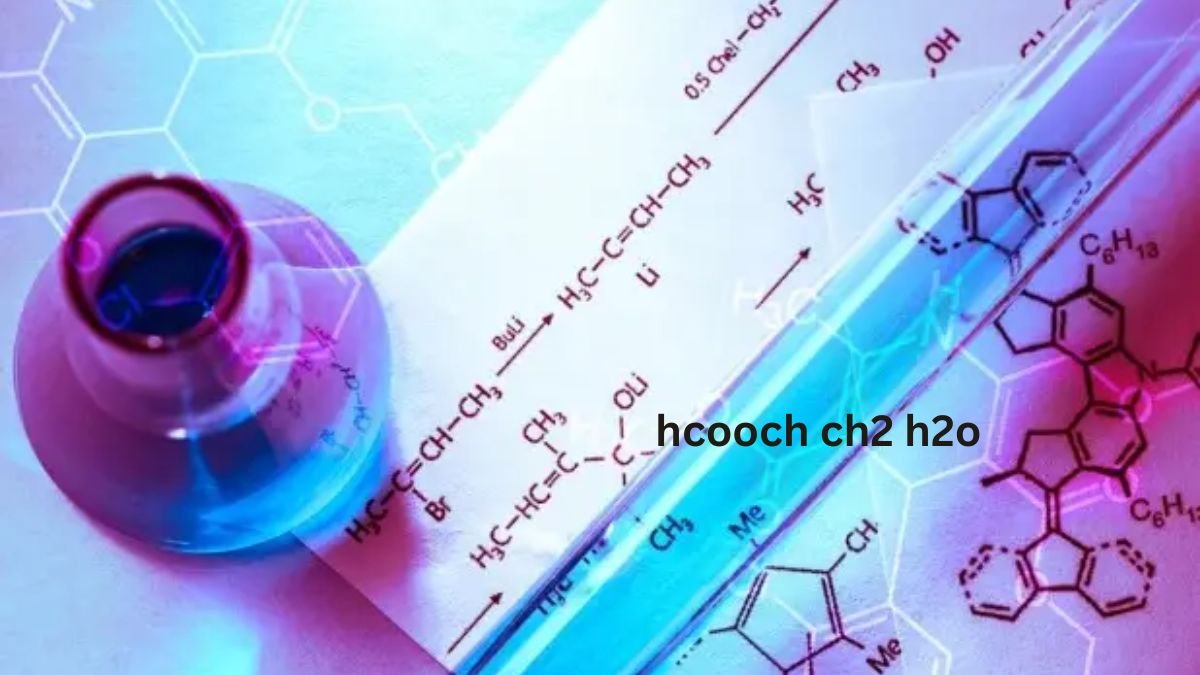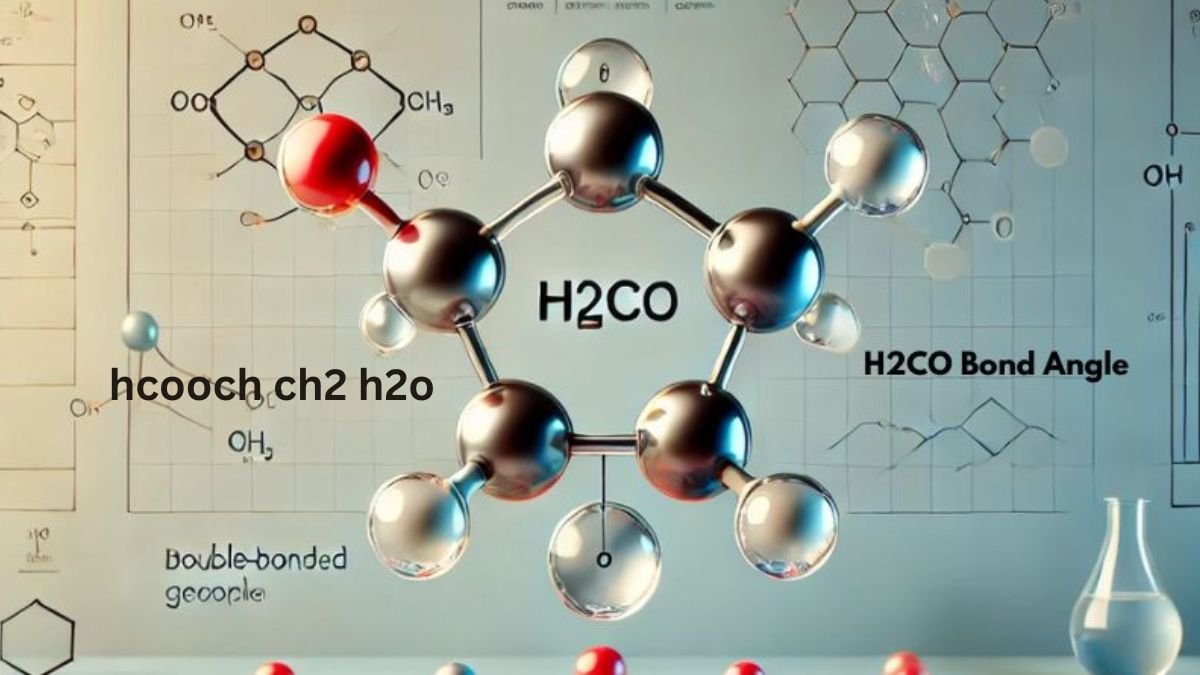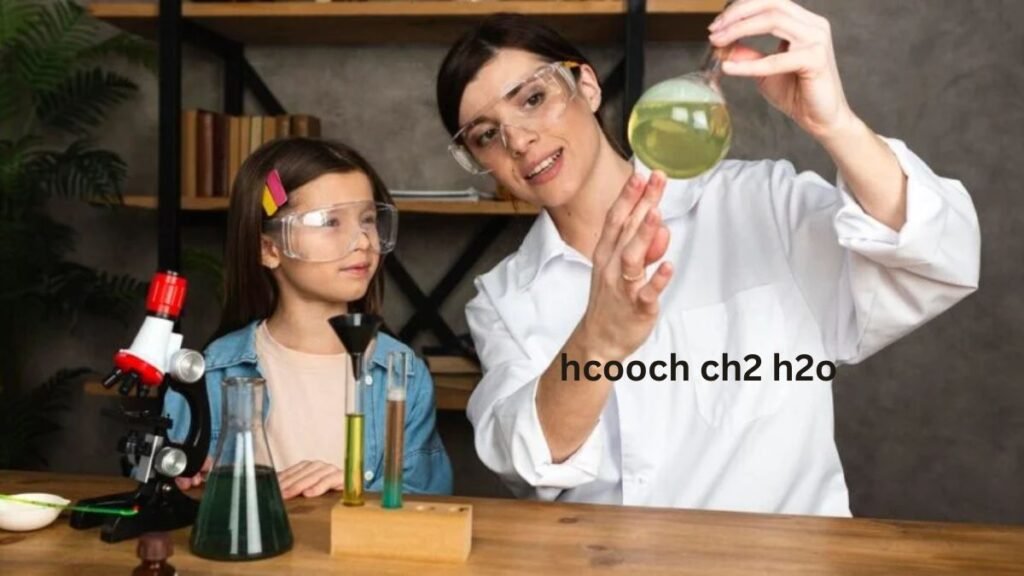Introduction
Chemical compounds are the building blocks of everything around us, influencing life and industrial processes alike. Among these, HCOOCH CH2 H2O (methyl formate), CH2 (methylene group), and H2O (water) are notable for their unique roles and properties. These molecules serve diverse purposes, from chemical reactions to real-world applications, making them indispensable in both science and everyday life.
Overview of HCOOCH
What is HCOOCH?
HCOOCH CH2 H2O is a type of organic compound classified as an ester. Esters are derived from acids (like formic acid) and alcohols (like methanol). Methyl formate has a pleasant, fruity odor, making it easily identifiable. Its primary applications are in the chemical and industrial sectors.
Structure of HCOOCH
The molecular structure of HCOOCH CH2 H2O includes a formate group (-COO-) attached to a methyl group (-CH3). This configuration makes methyl formate chemically reactive, allowing it to interact readily with other substances in various reactions.
Common Uses of HCOOCH
- Solvent: It dissolves other substances, especially in industrial settings.
- Pesticide: Methyl formate is used to produce fumigants that control pests in crops and stored products.
- Plastic Manufacturing: It acts as an intermediary in synthesizing certain polymers.
Exploring CH2
The Chemistry Behind CH2
CH2, or the methylene group, is a simple organic molecule fragment. It consists of a single carbon atom double-bonded to two hydrogen atoms. This small but mighty unit serves as a fundamental building block in organic chemistry.
Structure of the Methylene Group
The HCOOCH CH2 H2Ogroup is part of larger molecules rather than existing independently. It contributes to the structure and reactivity of hydrocarbons and polymers.
Applications of CH2 in Chemistry
- Polymer Production: CH2 plays a vital role in forming long-chain polymers, such as polyethylene.
- Fuels and Pharmaceuticals: It acts as an intermediary in creating fuels and medicinal compounds.
- Organic Reactions: The methylene group is essential in chemical reactions that create complex organic compounds.
Significance of H2O
The Importance of Water in Chemistry
HCOOCH CH2 H2O or water, is often referred to as the universal solvent because it dissolves more substances than any other liquid. This property makes water crucial in both industrial and biological processes.
Structure of H2O
Water’s molecular structure includes two hydrogen atoms covalently bonded to one oxygen atom. The molecule has a bent shape due to the lone pairs of electrons on oxygen, giving water its unique properties, such as high surface tension and its ability to act as a solvent.
Everyday Uses of Water
- Hydration: Essential for life, water is a primary component of biological systems.
- Agriculture: Used for irrigation to grow crops.
- Cleaning: Acts as a solvent to dissolve dirt and impurities.
Interaction Between HCOOCH, CH2, and H2O
Reactions Involving HCOOCH and H2O

When methyl formate HCOOCH CH2 H2O interacts with water, it undergoes hydrolysis, breaking down into formic acid and methanol. This reaction is particularly useful in laboratories and industries, where these byproducts are utilized.
Role of CH2 in Organic Reactions
The CH2 group is a critical component in organic reactions, often acting as a bridge between simpler and more complex molecules. For instance, CH2 groups in hydrocarbons help in energy storage and production.
Examples of Real-Life Applications
- Eco-Friendly Solvents: Water-based solvents replace harmful chemicals in industries.
- Biodegradable Plastics:HCOOCH CH2 H2O are used in creating sustainable materials.
Practical Examples
HCOOCH in Industrial Applications
Methyl formate is used to synthesize formic acid, which is crucial in:
- Agriculture for controlling pests.
- Textile manufacturing for dyeing and finishing fabrics.
CH2 in Synthetic Processes
The methylene group contributes to:
- Plastic production: Forming polyethylene and other polymers.
- Fuel synthesis: Acting as a base molecule for hydrocarbon fuels.
H2O as a Universal Solvent
Water dissolves salts, sugars, and a vast range of chemicals, enabling:
- Efficient cleaning processes.
- Chemical synthesis in laboratories.
Environmental Impact
The Role of H2O in Maintaining Ecosystems
Water is vital for life on Earth. It cycles through ecosystems via the water cycle, supporting plant growth, animal hydration, and temperature regulation.
Environmental Considerations for HCOOCH

Though useful, methyl formate can pose environmental risks:
- Contamination of soil and water when not disposed of correctly.
- Toxicity to aquatic life if released in large amounts.
Sustainable Chemistry Practices
Green chemistry initiatives aim to:
- Reduce the environmental impact of HCOOCH CH2 H2O.
- Promote water conservation and reuse in industrial processes.
Conclusion
HCOOCH CH2 H2O may seem like simple chemical formulas, but their roles are profound. They contribute to industrial progress, environmental sustainability, and everyday conveniences. Understanding their properties and interactions enriches our appreciation of chemistry’s role in the world.
FAQs
- What is the role of HCOOCH in chemistry?
HCOOCH, or methyl formate, is used in industrial applications such as solvent production, pest control, and plastic manufacturing. - Why is CH2 important in organic reactions?
CH2 acts as a reactive unit, enabling the synthesis of complex organic compounds like polymers and fuels. - How does H2O act as a solvent?
Water’s polarity allows it to dissolve a wide range of substances, making it indispensable in chemistry and daily life. - What are some safety concerns with HCOOCH?
Methyl formate is flammable and can be toxic if mishandled, requiring careful storage and disposal. - Can CH2 exist independently in nature?
CH2 typically exists as part of larger molecules and does not occur freely in nature due to its high reactivity.


